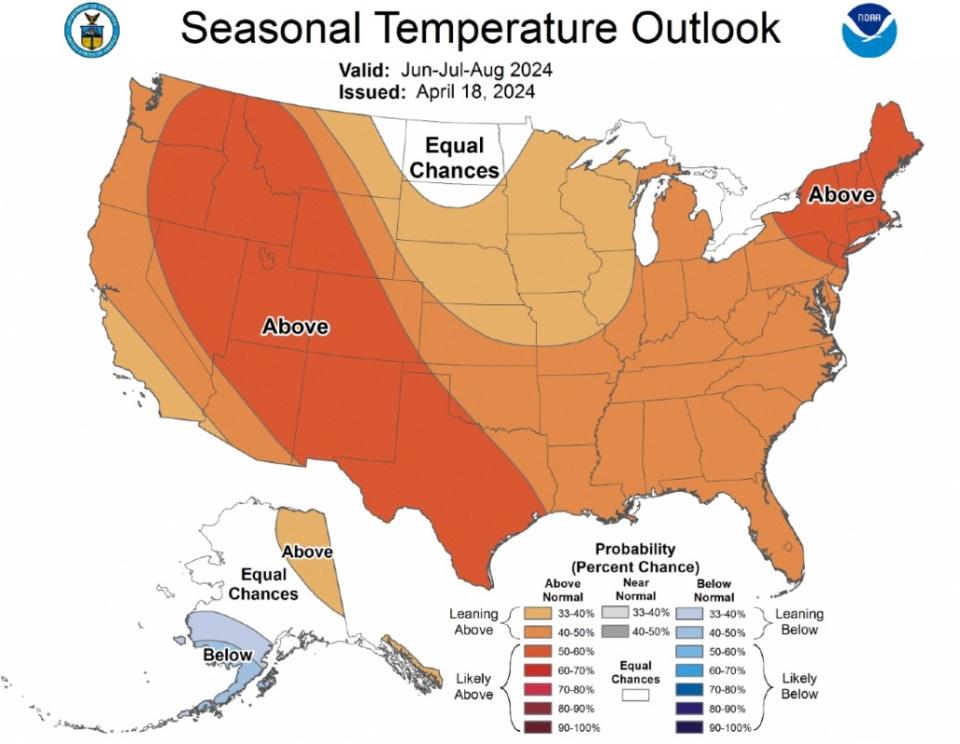Scientists Are Predicting a Hotter-Than-Average Summer for These Parts of the Country
After the planet experienced the hottest year on record in 2023, don't think we'll be getting any relief this summer. In what will surely come as little surprise, most of the United States can expect higher-than-average temperatures heading into the summer months, if current weather models are accurate.
This is according to the National Oceanic and Atmospheric Administration, which recently released its seasonal temperature outlook predictions for June, July, and August. Nearly half the states in the country, including Washington, Texas, and Colorado, as well as almost the entire Northeast, will likely see above average temperatures. In the entire country, only a small area of southwest Alaska is expected to see below-normal temperatures.
Based on one model, the U.S. Department of Health and Human Services expects temperatures to be an average of one to two degrees Fahrenheit hotter than average "across almost all of the contiguous United States." Though, some parts of the country, such as the Great Plains, the Midwest, southeastern New Mexico, and western Texas, could see temperatures soaring between 1.8 and 3.6 degrees Fahrenheit above average during the 90-day period.

NOAA
The culprit, in addition to climate change, is the weakening tail-end of the El Niño, which occurs every few years due to the Pacific Ocean developing above-normal sea surface temperatures. The natural climate phenomenon typically means dryer and warmer weather for northern parts of the U.S., with increased precipitation and flooding to the Southeast.
However, the current El Niño is "rapidly fading," which means that an La Niña will likely soon replace it. As a result, the La Niña is expected to push warmer waters towards Asia, which will trigger higher levels of drought in the Southwest U.S. with more precipitation and flooding to the Pacific Northwest. La Niña can also cause increased heat domes, which occurs when the atmosphere traps hot ocean air, causing pockets of extreme heat.
"Given this switch from El Niño to La Niña, we are expecting to see a hotter-than-normal summer for most of the United States," Washington Post climate reporter Scott Dance told CBS News. "It can last for days. We're certainly looking out for that sort of thing this summer."
In the event this summer does see the continuation of record-breaking temperatures, it could mean dangerous heat for much of the country. With extreme heat only expected to worsen in coming years, the NOAA recently expanded the availability of a new heat forecast tool called HeatRisk, which aims to provide weather information to vulnerable populations.
"Climate change is causing more frequent and intense heat waves that are longer in duration, resulting in nearly 1,220 deaths each year in the U.S. alone," said NOAA Administrator Rick Spinrad. "Last year was the warmest year on record for the globe, and we just experienced the warmest winter on record. HeatRisk is arriving just in time to help everyone, including heat-sensitive populations, prepare and plan for the dangers of extreme heat."

